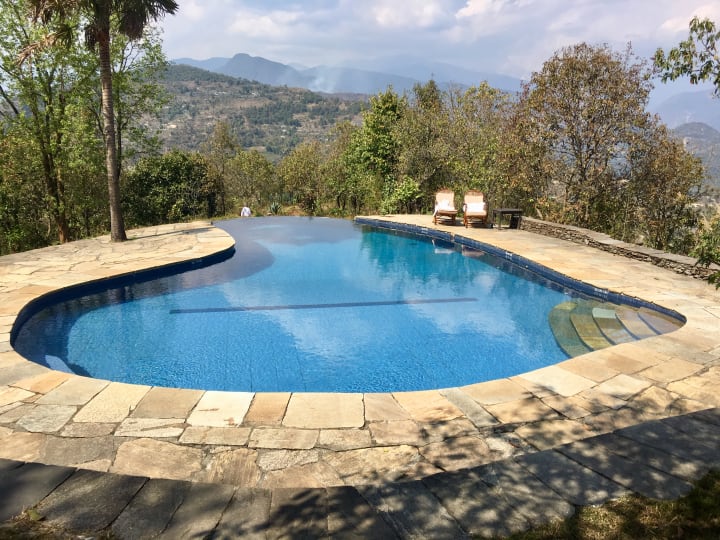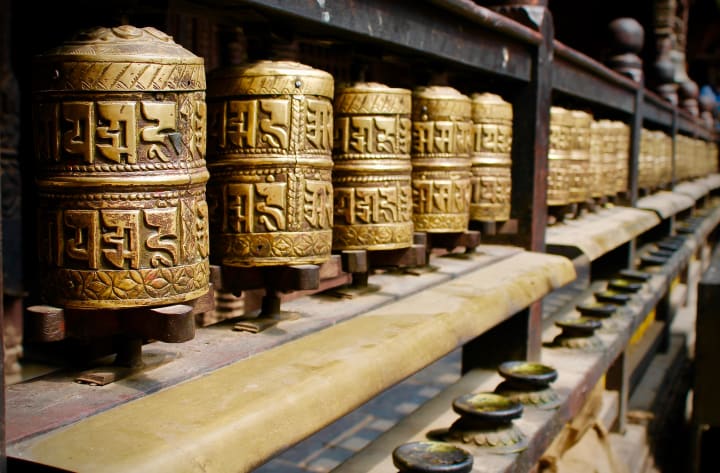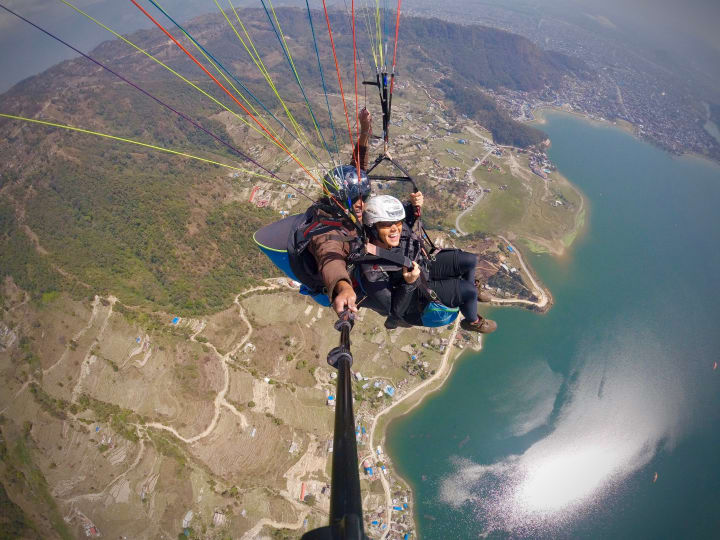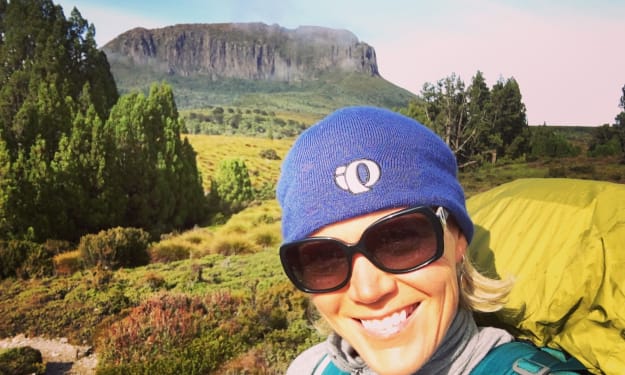10 days that changed my life!
A life-affirming, thigh-burning trek in the Annapurna foothills; a heavenly hillside yoga retreat in the Pokhara Valley. This is Nepal.

I’ve never been good at prioritising my own wellbeing, but in Nepal I nailed it with a blissful stay at a yoga retreat in the Pokhara Valley followed by an awe-inspiring, life-affirming, thigh-burning trek in the Annapurna foothills. I topped it all off with an overnight stay in a majestic 5-star luxury hilltop lodge. Yeeeeeeesssss!
When I arrived in Pokhara on a beautiful sunny day in March, the Annapurna mountains were perfectly reflected in the emerald-hued Phewa Tal, the country’s second largest lake.
I’d come to Nepal to strengthen my body and nourish my soul. With ancient yoga practice and the modern trekking industry both originating here, I had high expectations.
Heavenly hillside yoga retreat
A short, bone-crushing jeep ride on a rocky road took me from lakeside to the heavenly hillside Purna Yoga Retreat.
Founder and yoga teacher Manohar Shrestha has created a beautiful, welcoming and unique haven, close enough to walk back to the lakeside cafes and restaurants, but far enough away to escape the noise.
I’d seen photos of the purpose-built yoga hall, with its elegant hardwood floors, huge windows, and stunning views. The space was immediately soothing, and had all the equipment I would need during my stay: high quality yoga mats, soft round meditation pillows, snuggly blankets, blocks, instruments and more.

The perfectly designed daily schedule of yoga and meditation practices are led by compassionate, experienced and inspirational yogis, who expertly manage participants’ different levels in each class, so whether you are fairly new to yoga (like me) or you are an experienced practitioner you will leave with a happy heart and calm, clear mind.
All of the centre’s yoga teachers have spent a large part of their lives discovering and learning yoga from various centres in Nepal and India, from various masters as well as through self-study.
During my stay, I was under the watchful eye of the charismatic Tatwam (Yadav Bartaula) who praised my efforts, corrected my poses and gently reminded me that yoga was not a competition.
The teachers bring the philosophy of yoga into their classes, making it more than just physical. Each session is enriching, inclusive and fun, and there is no pressure to participate in anything that you don’t want to.
Along with meditation and yoga, I embraced the new experiences of an early morning nasal cleanse and an evening chanting session. Both made me feel self-conscious, but I joined in anyway. Understanding the meaning of particular words of the mantras didn’t really matter; I still experienced a delicious combination of joy and bliss.
There are also guided relaxation classes and sound healing, with gongs and singing bowls, and a monthly sunrise yoga tour to Sarangkot (1500m), the highest peak in the Pokhara Valley. It offers stunning mountain views of the snow-capped peaks of the Annapurna and Dhaulagiri ranges.
One of the really lovely things about this retreat is the company and conversations with the guests and teachers, especially during the communal meals. In this environment, bonds form quickly and you find yourself talking at length about life, love and of course how to deepen your yoga practice.
The wellness activities are a delight. You choose a new one each day. My favourite was the aromatherapy steam bath. The fragrant Himalayan salt foot bath was very popular, especially with those who had recently completed the Poon Hill trek. The mud bath is also a great choice, as is a dip in the outdoor heated swimming pool.
The retreat has 10 rooms, all of which have twin beds and an attached bathroom with solar powered heated water, western style toilet and a sink. Sharing a room is all part of the fun.
The food was an absolute standout – all vegetarian, wholesome, organic and made with super fresh ingredients. Think cardamom and cinnamon porridge with dates and pomegranate, fresh fruit, daal bhat with fresh salad and vegetable curries. Herbal tea (a delicious signature blend) and filtered water are available 24 hours.
Because I didn’t have to worry unnecessarily about hygiene, safety, or language I was free to focus on spiritual enlightenment and the epic snow-capped peaks. I even conquered my fear of heights and went paragliding (tandem). Professional companies have the approval of the Nepalese Civil Aviation Authority and pilots are fully trained. Being airborne above the lake is a real treat and an amazing adrenaline rush.
Majestic Ghorepani Poon Hill Trek
With my feet firmly back on solid ground, it was time to lace up my hiking boots.
I’d opted for the Ghorepani Poon Hill Trek (3210m), one of the most popular short treks in Nepal, which passes through culturally rich villages set against a backdrop of majestic mountains.

Most people complete it in 5 days. It’s easy to reach from Pokhara and a quick flight away from Kathmandu.
Generally it’s an easier trek compared to other higher altitude treks in Nepal, but it’s best to train for the very steep ascents (often unrelenting) and descents, especially from Ghorepani to Tikhedhunga.
At this time of year (spring) the hillsides are swathed in stunning crimson-red rhododendron, Nepal’s national flower. The higher I trekked the more mystical the forests became.
The trek can be completed clockwise or anti-clockwise. Both ways are equally rewarding. Because of timing, I started with a rough 3-hour private jeep ride from Pokhara to Kimche (1640m) and then walked to the charming village of Ghandruk (2360m), the second largest Gurung settlement in Nepal. Most people start earlier along the trail in Naya Pul.

Tadapani and Ghorepani were the next two overnight stops on this trek, both of which offer a jumble of lodges, shops and souvenir stands, as well as a wonderful atmosphere and spectacular views.
Rarely did I walk on flat ground. In places, the trail is interlaced with large tree roots. Other times I was walking on narrow ridges, crossing streams or meandering past neatly terraced hills. Mostly I was walking up or down stone staircases.
It was easy to rise before dawn to make the 45-minute uphill trek to the hill station of Poon Hill. The clear morning view of the Annapurna range was epic, and very popular – it took quite a while to get my selfie at the famous Poon Hill sign.
On this trek you’ll come across plenty of other people: locals going about their everyday lives, as well as other trekkers from around the world. You’ll also be sharing the trails with resident ‘buff’ (water buffalo), goats, mules, horses and cows (you have to ascend above 12,000ft/3600m to see yaks).

Don’t forget to look up. You’ll see vultures, eagles and buzzards at close range, as well as large white-grey langur monkeys eating the many buds and flowers of the rhododendron.
This trek has a quality network of trekkers’ lodges (guesthouses). Conditions are basic but comfortable and each lodge has its own character. Most rooms have two twin beds, prepped with sheets, blanket and a pillow. You’ll still need a sleeping bag. Hot showers, flushing toilets, phone charging (demand for charging points can be high), wifi and filtered water are readily available. Walls are not insulated so bring ear plugs.
The home-cooked food I was served was wonderful. Each daal baht was different – some curried, some spicy, some plain, some thicker. If you’re craving something other than daal baht, there are plenty of other options. The communal restaurant area, usually with a central wood stove, is a great place to eat, mingle with other trekkers, or read.
Travelling with my own private guide and porter made for hassle-free and insightful trekking, especially as I was a first-timer to Nepal. Mer Man, my experienced Nepalese guide, had a big smile, spoke good English and knew the area well. Like my porter, Vishnu, he was a Buddhist Tamang, one of the largest groups in the country. We became good friends. Ours was an emotional farewell at Tiger Mountain Pokhara Lodge.

Luxury at Tiger Mountain Pokhara Lodge
The jaggy twin summits of Machhapuchhre (Fish Tail) were the first thing I saw when I walked through the entrance of this luxury lodge.
Tiger Mountain is perched on a hilltop ridge that rises a thousand feet above the Pokhara Valley. On clear days the view stretches to three of the world’s 8000m peaks: Dhaulagiri, Annapurna and Manaslu.
Jhalak Chaudhary, who looks after guest relations and operations, greeted me with a big warm-hearted smile. He summoned a big pot of tea and a plate of freshly cut sandwiches and left me on the terrace to meditate on the majestic white peaks.
I gobbled ungracefully then excused myself for a refreshing swim in the stunning infinity edge swimming pool. I’d been looking forward to it since researching the lodge months ago, and it did not disappoint. It has a mountain backdrop like no other and is a great place to relax and read.

Adding to the relaxation and rejuvenation, the Lodge also offers Shiatsu massage, Ayurvedic treatments, meditation and yoga.
Tiger Mountain Pokhara Lodge is the essence of tranquillity. The 18 hand-cut stone cottages have private gardens, spacious rooms, and verandas/balconies.
I enjoyed a perfect night’s sleep in a four-poster king size bed in a room equipped with everything you could possibly need: multiple torches (power cuts are common in Nepal), three flasks of cool, filtered water; a mobile phone and whistle (in case of emergencies); divine Ayurvedic facial products; plenty of reading material, and more.
The Lodge runs on high environmental and ethical principles and blends in admirably to the surroundings of local villages, thanks to its wonderful traditional architecture and initiatives that support local schools and conservation of the environment.
The Lodge set new standards for hospitality in Pokhara, and continues to pioneer responsible conservation tourism today.
Managing Director, Marcus Cotton, who was brought up near Oxford (England), has made Nepal his home for 30 years. He moved to the award-winning Lodge in 2001. Enthusiastic and talkative, he is knowledgeable about trekking, conservation and the politics, culture and history of this tiny nation, and was the perfect host and dinner companion.
Next to the bar in the main lodge is a treasury of books and maps about the Himalayas and Nepal. The eclectic collection originated from Colonel Jimmy Roberts’, one of the Lodge’s founders, and the man who established the trekking industry in Nepal.
The Lodge’s menu is exquisite and imaginative. Dinner is a continental four-course meal with an alternate Nepali thali choice available. I discovered the pleasures of adding home-made chilli gin to cauliflower soup and savoured the best millet bread and lemon tart I have ever tasted.
Breakfast is at a time of your choosing. I requested a wake-up call so that I could watch one final epic Himalayan sunrise. A pot of local organic coffee and homemade biscuits was delivered at 6am to my cottage verandah. Heaven!
Guests can also take short guided walks and longer day treks through local villages, forest and farmland, with a tempting picnic lunches supplied.
One night here was never going to be enough.

Travelling in Nepal is a profoundly uplifting experience
Nepal is one of the most beautiful and spiritual countries I have ever visited, and the Nepalese people are genuinely and unconditionally nice, welcoming, accommodating, happy and good spirited.
Out on the trail and on the yoga mat I had important conversations with myself, undistracted by the trappings and fabricated urgency of my usual life. I returned home with clarity and a renewed energy, and an appreciation for what I have right now.
Namaste, Nepal. See you again soon.

Tips for travellers
1. When you fly to Pokhara (30 minutes from Kathmandu) make sure to get a seat on the right-hand side of the plane for spectacular mountain views.
2. You can easily hire trekking gear and equipment in Kathmandu, including trekking poles, sleeping bags and jackets.
3. Nepalis are very laid back and won’t invade your personal space. Nepali men are not prone to staring or making muttered comments to foreign women.
4. Nepal is a conservative society. Be respectful with your clothing choices; cover your knees and shoulders.
Meet the author
Sam is a writer, hiker, ocean swimmer, trail runner, volunteer lifesaver and adventure traveller based in Melbourne, Australia. She loves authentic connections and anything outdoors.
About the Creator
Samantha McCrow
Sam is a writer, hiker, ocean swimmer, trail runner, volunteer lifesaver and adventure traveller based in Melbourne, Australia. She loves authentic connections and exploring outdoors.






Comments
There are no comments for this story
Be the first to respond and start the conversation.